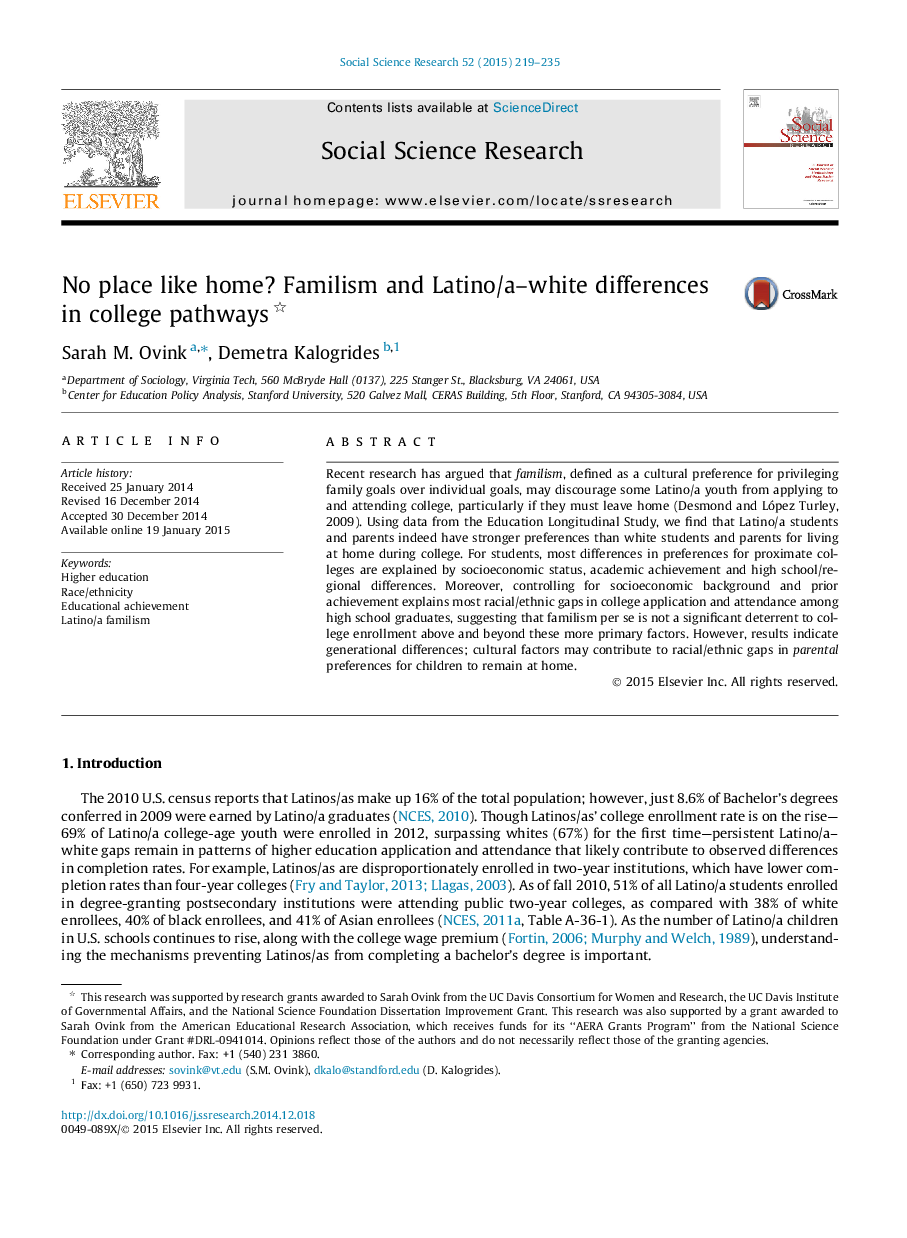| کد مقاله | کد نشریه | سال انتشار | مقاله انگلیسی | نسخه تمام متن |
|---|---|---|---|---|
| 955697 | 1476123 | 2015 | 17 صفحه PDF | دانلود رایگان |
• We examine group differences in preferences for living at home during college.
• We examine if such preferences can explain Latino/a–white college-going differences.
• Socioeconomic and academic factors shape student preferences for colleges near home.
• Asian and Latino/a parents exhibited stronger preferences for colleges near home.
• Desire to live at home during college is not uniquely pronounced among Latinos/as.
Recent research has argued that familism, defined as a cultural preference for privileging family goals over individual goals, may discourage some Latino/a youth from applying to and attending college, particularly if they must leave home (Desmond and López Turley, 2009). Using data from the Education Longitudinal Study, we find that Latino/a students and parents indeed have stronger preferences than white students and parents for living at home during college. For students, most differences in preferences for proximate colleges are explained by socioeconomic status, academic achievement and high school/regional differences. Moreover, controlling for socioeconomic background and prior achievement explains most racial/ethnic gaps in college application and attendance among high school graduates, suggesting that familism per se is not a significant deterrent to college enrollment above and beyond these more primary factors. However, results indicate generational differences; cultural factors may contribute to racial/ethnic gaps in parental preferences for children to remain at home.
Journal: Social Science Research - Volume 52, July 2015, Pages 219–235
